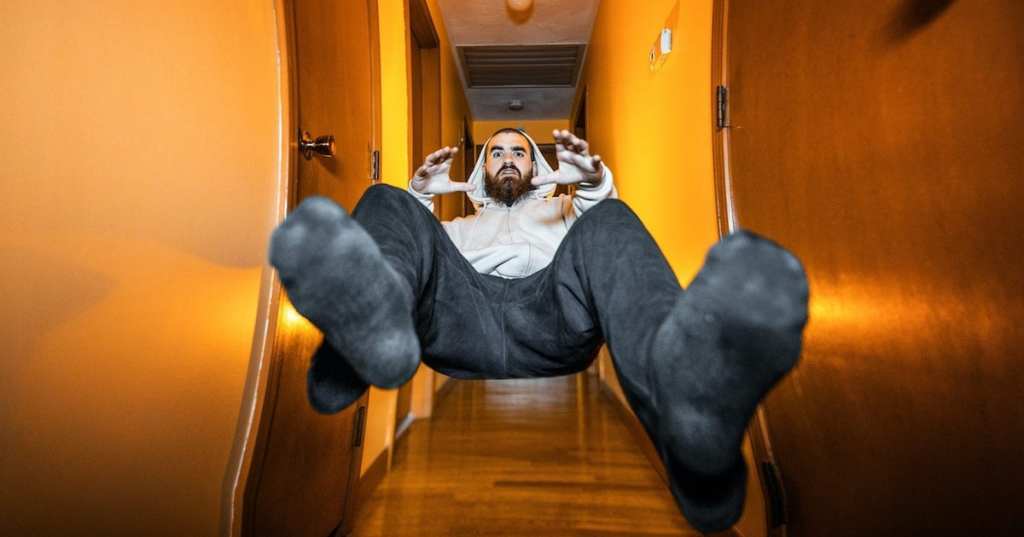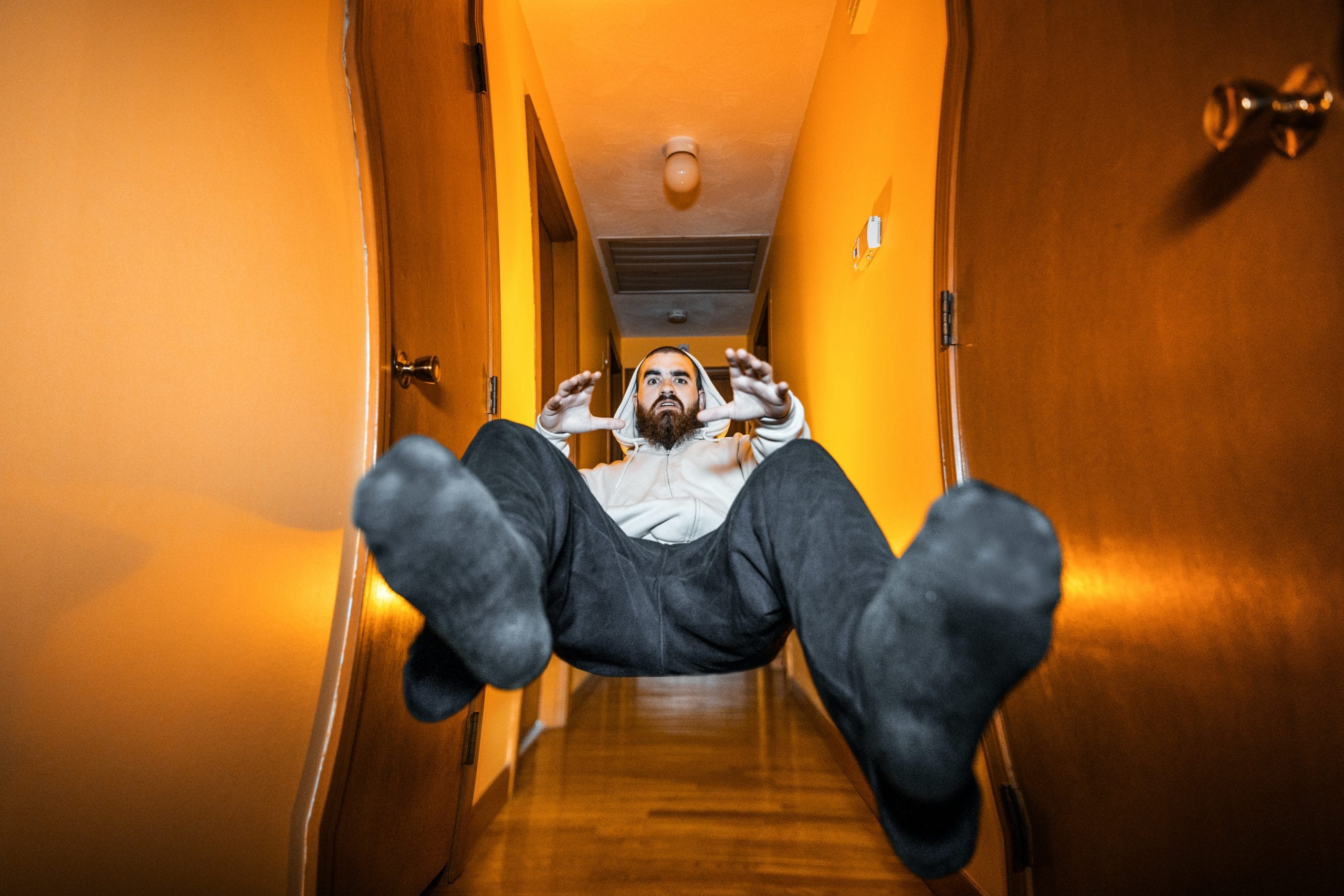Many of us love philosophy and debate and can sit around the table for hours discussing the events of the world and thought experiments.
The idea of combining philosophy with illustration is appealing, and many of you will probably enjoy this project that philosopher and artist Helen De Cruz put together of 8 illustrated philosophical thought experiments.
As Helen explains, many philosophers use thought experiments to contextualize and reveal the intuitions behind their ideas. Thought experiments are basically like short stories that help give meaning to ideas that can be difficult to grasp.
See if you can figure out how each of these thought experiences work!
1. The missing shade of blue

Photo by Patrick Tomasso on Unsplash
In this thought experiment, the man pictured has seen every color except for one specific shade of blue. However, if he’s seen other gradations of blue, he could arrange them in his mind and understand that one is missing.
The question: will the man be able to fill in the missing color using only the power of his imagination?
The story behind it:
Philosopher David Hume came up with this thought experiment while developing his idea that people learn about the world by experiencing it. This experiment is meant to be a counterexample of his argument.
If we really all learn about the world through our experiences, then the man would not be able to fill in the missing shade.
However: most of us can fill in the shade! But it might not be as easy as you suspect.
2. The experience machine

Photo by Philippe Oursel on Unsplash
Here’s another one for you!
What if you had a device that could make any experience you want to happen? That’s what the experience machine is.
The experience machine can convince you that whatever you want is really happening. If you want to believe you are racing a horse, you will be. Amazing!
But the reality is that you are floating in a tank with electrodes attached to your brain.
The question is: would you plug into the experience machine for the rest of your life? You would be happy, but you would also be “living” a life that doesn’t really exist.
The story behind it:
Philosophers have asked themselves a key question for thousands of years. What is happiness? Is happiness more than just experiencing pleasure?
The belief that pleasure alone is all you need to be happy is known as hedonism, and the experience machine offers a direct challenge to hedonism.
If pleasure was the direct line to being happy forever, just about everyone would plug themselves in. But it’s not, and we know it.
The philosopher Robert Nozick believed this is because humans know that we want more than just pleasure in our journeys. We have dreams and goals that go far beyond anything being plugged into a machine can offer us.
3. The child at the well

Photo by Marcos Paulo Prado on Unsplash
The philosopher Mèng kē, or Mengzi, was a Confucianist who is widely celebrated as the “Second Sage” (second only to Kongzi, also known as Confucius).
Mengzi believed that compassion is a fundamental trait in humans, and he used this thought experiment about a child who is about to fall into a well to prove his belief.
Nearly all of us who see this image will immediately feel worried about the child, right? That’s a dangerous situation!
We wouldn’t feel alarmed and worried because we want someone to tell us we’re a good person for being worried about the child — we would feel worried because the child could get hurt, and others might think less of us if we didn’t try to prevent that from happening.
The story behind it:
Mengzi believed that all humans have four roots (or “sprouts”) that guide our morality.
The roots are ren (compassion), yi (rightness), li (ritual propriety), and zhi (wisdom).
While we each have these roots or sprouts inside of us, like any good gardener, we have to nurture them.
4. Sleeping Beauty

Photo by Kinga Cichewicz on Unsplash
Many of us know the fable about Sleeping Beauty, right? In this thought experiment, the story has been modernized. Sleeping Beauty is participating in a research experiment, and she’s been put to sleep by the researchers.
Here’s how the experiment works: when Sleeping Beauty wakes up, she will be put back to sleep with a medication that will make her forget that she woke up in the first place. The researchers will toss a coin.
If it lands on tails, Sleeping Beauty will be awoken on Monday and Tuesday for a short while.
If the coin lands on tails, she will only be awoken on Monday.
And here’s the crux of the experiment: when Sleeping Beauty wakes on Monday without any idea what day it is, what proof does she have that the coin landed on heads?
The story behind it:
Many of us believe that the odds of the coin landing on heads is 1/2, which makes sense — there are only 2 sides to a coin.
However, philosopher Adam Elga, who specializes in game theory, would argue that Sleeping Beauty should believe there is a 1/3 chance that the coin landed on heads.
Why? Because she doesn’t know whether it’s Monday or Tuesday, so she likely believes it’s either.
When Sleeping Beauty wakes up, P(Tails and Tuesday) = P(Tails and Monday) = P(Heads and Monday), so the probability of each occurrence is 1/3.
5. Otto and Inga visit a museum

Photo by Christian Fregnan on Unsplash
This is a pretty fun one! Otto and Inga want to go visit the Museum of Modern Art.
There’s a catch, though: Otto has Alzheimer’s, and he has a notebook he carries with him that will help him remember how to get to the museum. The notebook tells him that the museum can be found on 53rd Street.
Inga, however, can use her biological memory to recall the same information.
Many of us would understand that Inga has an intuitive, understood belief about where the museum is because she can recall it from her memory. Would we assume Otto has the same belief even though he uses his notebook?
The story behind it:
There is one big question being asked here. Do thoughts only happen in our brains, or do they also happen in the world?
In this experiment, both Otto and Inga have a tool that they use to retrieve information. Their tools work in the same way, but are they the same tool?
It can be reasonably argued that Inga’s belief about the location of the museum is no more or less useful than Otto’s belief, though one is based on memory and one is based on information in a notebook.
Both memory and the notebook are not fail-proof; Inga’s memory can be impacted by something like having a drink at lunch, and someone could steal Otto’s notebook (or he could lose it).
6. The invisible gardener

Photo by Emiel Molenaar on Unsplash
Two partners or roommates have returned home and their garden is overgrown and neglected.
However, they notice that there are still flowers blooming, and one comments that someone must have been sneaking in and taking care of the garden. The other doesn’t agree.
They decide to ask their neighbors if anyone has been in the garden, but everyone says no.
So then they commit to learning about what happens to a garden when no one takes care of it.
The skeptical partner believes that their research proves there is no gardener, but the other partner believes the gardener is invisible but that there is evidence of this person’s presence that can’t be seen or heard.
How will they ever solve their disagreement?
The story behind it:
If you haven’t caught on yet, this experiment is definitely an analogy about whether or not God exists.
The skeptical friend is not a believer, and he doesn’t see a larger sense of design in the world around him.
The experiment forces us to ask ourselves: to what degree will we bend reality so that it can support (or refute) a belief in God?
There’s also a second question to ask: is the debate really about God, or is it about having two different ways to look at the world? I might see a garden, but you might see a wilderness.
7. The Russian nobleman

Photo by Alejandro Escamilla on Unsplash
A young Russian nobleman is planning to split his estate among peasants instead of his family members, but he knows he is young and idealistic and he’s not sure if he will have the same ideals in his old age.
He decides to put his idealistic plan into a legal document and to place his wife in charge of revoking the plan.
He then asks his wife to promise that she will not revoke his plan even if she does change his mind.
He also tells his wife that the ideals are so important to him that “If I lose these ideals, I want you to think that I cease to exist.”
Fast-forward a few dozen years, and now the man is middle-aged and wants to revoke the documents. What choice does she have?
The story behind it:
This experiment calls into question the idea of personal identity. Is the middle-aged Russian nobleman the same man he once was?
Should his wife have to decide what to do, or should she be relinquished from the agreement? After all, if she has changed, hasn’t she?
8. The floating man
Ibn Sina, or Avicenna as he is often referred to in the West, was one of the most important thinkers of the Islamic Golden Age.
He frequently debated the nature of existence. In this experiment, we imagine a man who is brought into the world as an adult.
The man just appears and has no memories of having lived any other part of his life.
The man is floating in the air with his eyes closed, he can’t hear a thing, and his limbs are spread out wide so that he cannot feel his own body.
With all this in mind, we now ask ourselves: is the man aware that he exists?
The story behind it:
Ibn Sina is asking whether our selves are the same as our bodies. The great philosopher did not believe that our bodies are the summation of ourselves.
If this were the case, the man would have some awareness of his body’s experience, and he would have memories as well.
Ibn Sina’s conclusion? Our awareness comes from our souls, not our physical experiences.
Those were pretty amazing, right? Don’t forget to share with your friends, and let us know which of the experiments is your favorite in the comments!







